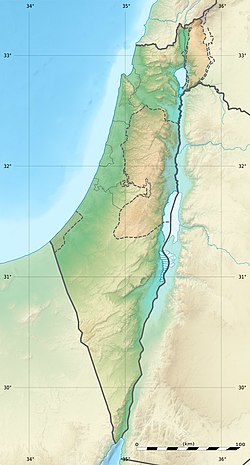| Battle of Megiddo (609 BC) | |||||||||
|---|---|---|---|---|---|---|---|---|---|
| Part of the Medo-Babylonian conquest of the Assyrian Empire | |||||||||
 A small kneeling bronze statuette, likely depicting the Egyptian pharaoh Necho II, currently on display at the Brooklyn Museum. | |||||||||
| |||||||||
| Belligerents | |||||||||
| Twenty-sixth Dynasty of Egypt | Kingdom of Judah | ||||||||
| Commanders and leaders | |||||||||
| Necho II | Josiah † | ||||||||
| Strength | |||||||||
| Unknown | Unknown | ||||||||
| Casualties and losses | |||||||||
| Undetermined | Undetermined | ||||||||
Location within present-day Israel | |||||||||
This Battle of Megiddo is recorded as having taken place in 609 BC, when Pharaoh Necho II of Egypt led his army to Carchemish (northern Syria) to join with his allies, the fading Neo-Assyrian Empire, against the surging Neo-Babylonian Empire. This required passing through territory controlled by the Kingdom of Judah. The Judaean king Josiah refused to let the Egyptians pass. [3] The Judaean forces battled the Egyptians at Megiddo, resulting in Josiah's death and his kingdom becoming a vassal state of Egypt. The battle is recorded in the Hebrew Bible, the Greek 1 Esdras, and the writings of Jewish historian Josephus.
Contents
- Biblical accounts
- Debate over II Chronicles
- Other accounts
- Jewish
- Greek
- Location
- Aftermath
- See also
- Notes
- References
- Further reading
While Necho II gained control of the Kingdom of Judah, the Assyrian forces lost to the Babylonians and Medes at the Fall of Harran, after which Assyria largely ceased to exist as an independent state.


